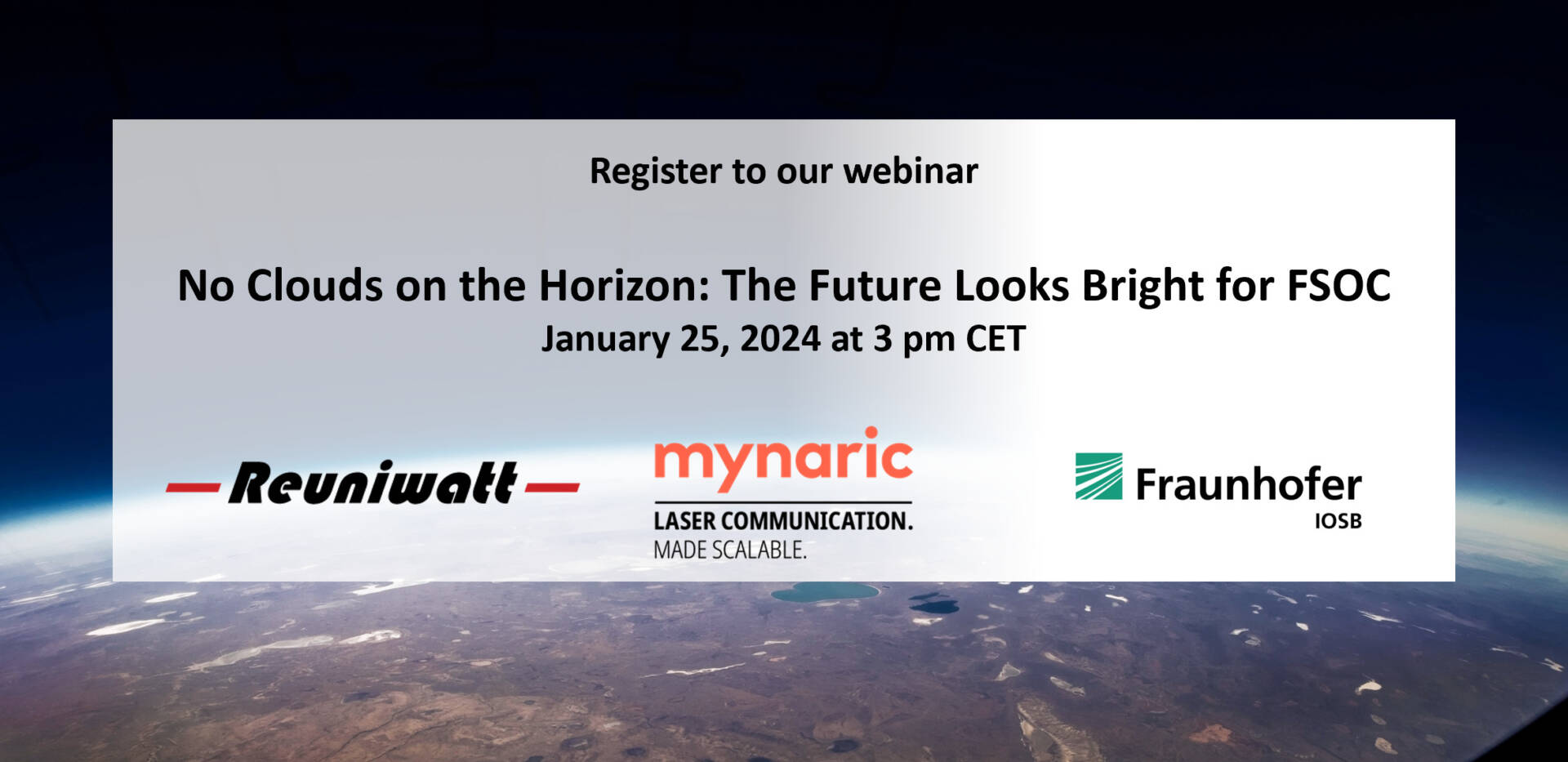[Webinar] No Clouds on the Horizon: The Future Looks Bright for FSOC
In the last decade free space optical communications (FSOC), also called laser communications, has evolved from a niche to a mature technology. Recent successes have pushed this technology forward, with the aim of providing global broadband coverage.
However, FSOC still faces two major challenges to providing similar performance to terrestrial “backbone class” long-haul fiber networks, which need to be resolved in order to increase the physical link efficiency. FSOC links from Space to ground require a certain number of photons per bit in order to close the link; and some Space applications require a very large amount of data to be transferred. Using dense multiwavelength division multiplexing (DWDM) helps achieve terrabits per second data rates per link. Mynaric is at the forefront of the development of these applications and will present the state-of-the-art and an outlook into the future of FSOC. On the way to the ground, another challenge arises from the effects of atmospheric disturbances such as clouds. Therefore, robust optical communication needs to rely on a network of optical ground stations, as well as on weather forecasting in order to realize its potential.
How can terabit data rates be realized and what are the new challenges when moving from fiber to FSOC? What is necessary to ensure reliable ground to space and space to ground links through the atmosphere? In this webinar, our speakers will tackle both challenges, and show the road to bringing FSOC to the level of backbone class performance and reliability.
Carsten Fechtmann, System Architect for Mynaric’s CONDOR optical communication terminals, will present the advantages of FSOC for a directional sending and receiving of information, highlight the latest developments in very high data rate links.
Olivier Liandrat, Sky Imaging Team Leader at Reuniwatt, will outline the benefits of using reliable weather data, and present state-of-the-art cloud forecasting for OGS networks, as well as use cases from Reuniwatt’s projects.
The webinar will be chaired by Dr. Szymon Gładysz, wo will lead the audience through the webinar, and forward your questions on flexibility, security, and bandwidth of FSOC, as well as transmission through clouds to the panelists.
After this webinar, you will have a better understanding of:
The latest advancements in free-space optical communications
Using dense multiwavelength division multiplexing (DWDM) also in the space domain to achieve terabits per second data rates per link
Ensuring reliable, robust optical communication past the clouds and near urban centers instead of mountain tops for such links
State-of-the-art weather forecasts for ensuring optical link availability and selecting the most suitable optical ground station from the available network
About the speakers:
Dr. Szymon Gładysz is head of the Adaptive Optics Group at Fraunhofer Institute of Optronics, System Technologies and Image Exploitation in Ettlingen, Germany. He has studied and worked in Poland, Ireland, Germany, Israel und USA on topics related to astronomical instrumentation, image processing and laser beam propagation through random media. He joined Fraunhofer IOSB in 2012 and currently leads adaptive optics research which focuses on light propagation through atmospheric and underwater turbulence with its main application being free-space optical communications.
Carsten Fechtmann is the system architect for Mynaric’s CONDOR optical communication terminals product line. He has been working in the space industry for more than 25 years and in optical communication for nearly 15 years. He is currently the technical lead of the ESA-funded project “optical technologies for next generation high throughput optical inter-satellite links”, which aims to lay the foundation for the next generation of Tbit/s class free space optical communication from ground to space, around the globe via satellites and back to Earth.
Olivier Liandrat is an engineer in Computer Science and Applied Mathematics (Grenoble INP-Ensimag) specialised in image processing. He joined Reuniwatt in 2012 for his end-of-study internship in order to conduct the company’s first tests on short-term irradiance prediction from wide-angle images of the sky. As the company’s first employee, he actively participates in Reuniwatt’s growth, and contributed to the first patent filing of Reuniwatt’s Sky InSight™ wide-angle thermal camera. At the end of 2015, he joined the IRT Saint-Exupéry to carry Reuniwatt’s expertise within the ALBS research project. Alongside Airbus DS, Thales Alenia Space and CNES, the project developed the essential building blocks to adapt the Sky InSight™ to the challenges of laser optical communication. Building on this experience, he is now overseeing the company’s further developments for cloud-sensitive markets, including air traffic management.

Szymon Gładysz
Moderator
Adaptive Optics Group Leader @Fraunhofer IOSB
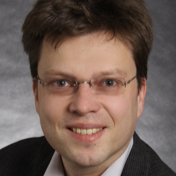
Carsten Fechtmann
Speaker
S @Mynaric
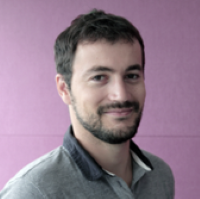
Olivier Liandrat
Speaker
Sky Imaging Team Leader @Reuniwatt
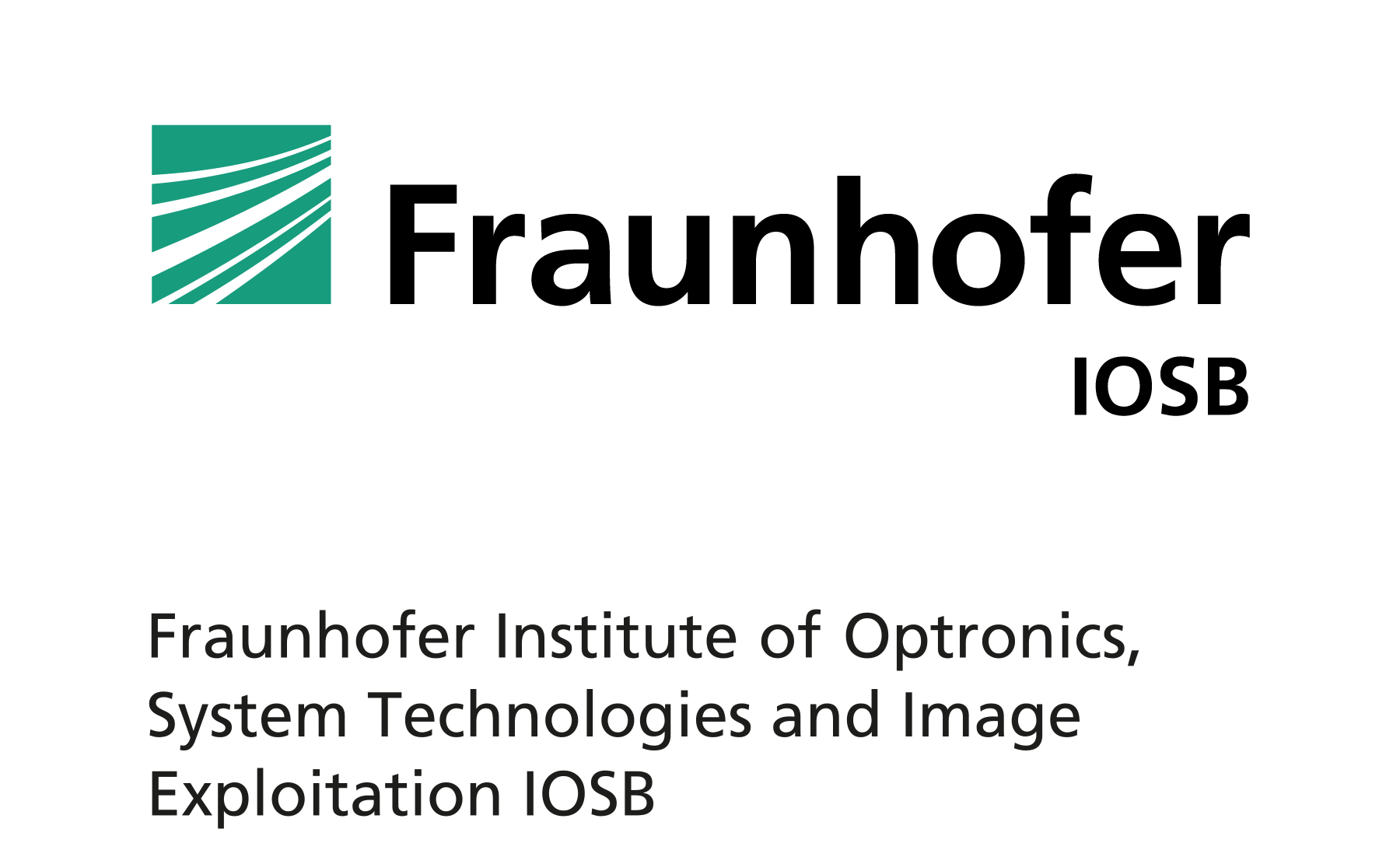
About Fraunhofer IOSB (iosb.fraunhofer.de)
The Fraunhofer Institute for Optronics, System Technology and Image Exploitation (IOSB) is Europe´s largest research institute in the field of image acquisition, processing and analysis. Focus areas are the evaluation and development of active and passive electro-optical sensors as well as understanding the impact of environmental factors (e.g. air or water) on the propagation of light. Fraunhofer IOSB has built know-how in the area of channel modelling, optical wireless communications, beam delivery and adaptive optics.
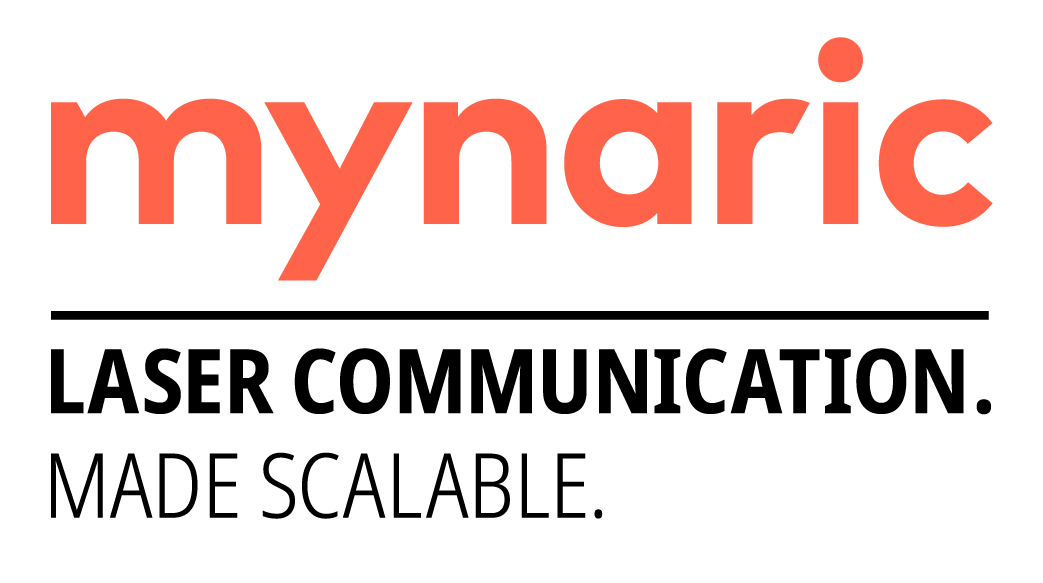
About Mynaric (mynaric.com)
Mynaric (NASDAQ: MYNA) (FRA: M0YN) is leading the industrial revolution of laser communications by producing optical communications terminals for air, space and mobile applications. Laser communication networks provide connectivity from the sky, allowing for ultra-high data rates and secure, long-distance data transmission between moving objects for wireless terrestrial, mobility, airborne- and space-based applications. The company is headquartered in Munich, Germany, with additional locations in Los Angeles, California, and Washington, D.C.
About Reuniwatt (reuniwatt.com/)
Reuniwatt is a major player of the solar radiation and cloud cover assessment and solar and wind power forecasting. Based on solid Research and Development works, the company offers reliable products and services intended for professionals of various fields, making the best out of two key facets of the meteorology: atmospheric physics and data sciences. A particular focus has been placed on solar energy forecasting, while developing cutting edge solutions to improve the short-term prediction of the solar resource.
The company has won many grants, including H2020’s SME Phase 1 programme, which makes Reuniwatt a European Champion with regard to innovation. Reuniwatt has also been selected among the national fast-growing companies to join the prestigious French Tech 120 programme in 2020 and 2021, and the French Space Tour 2021.
